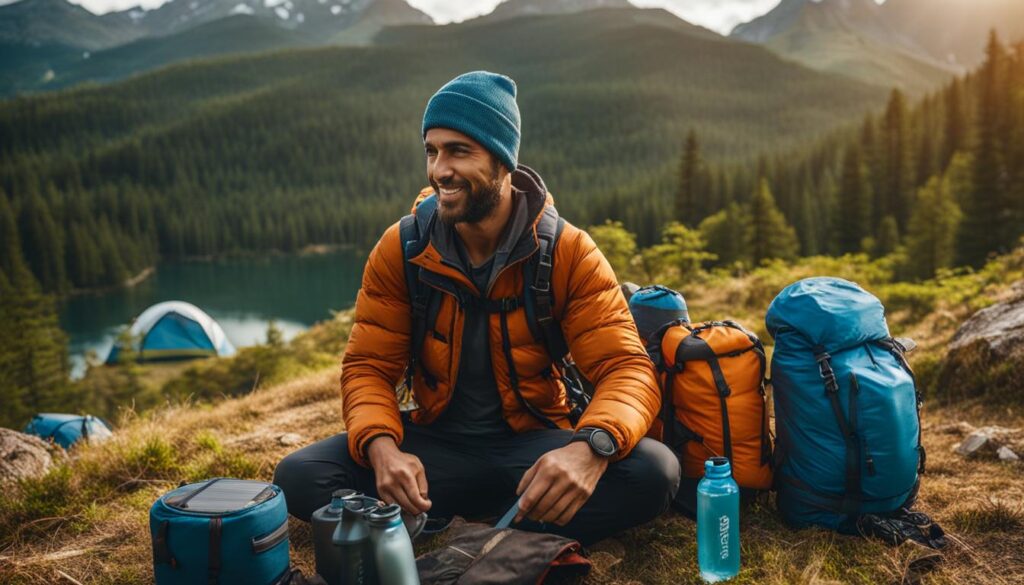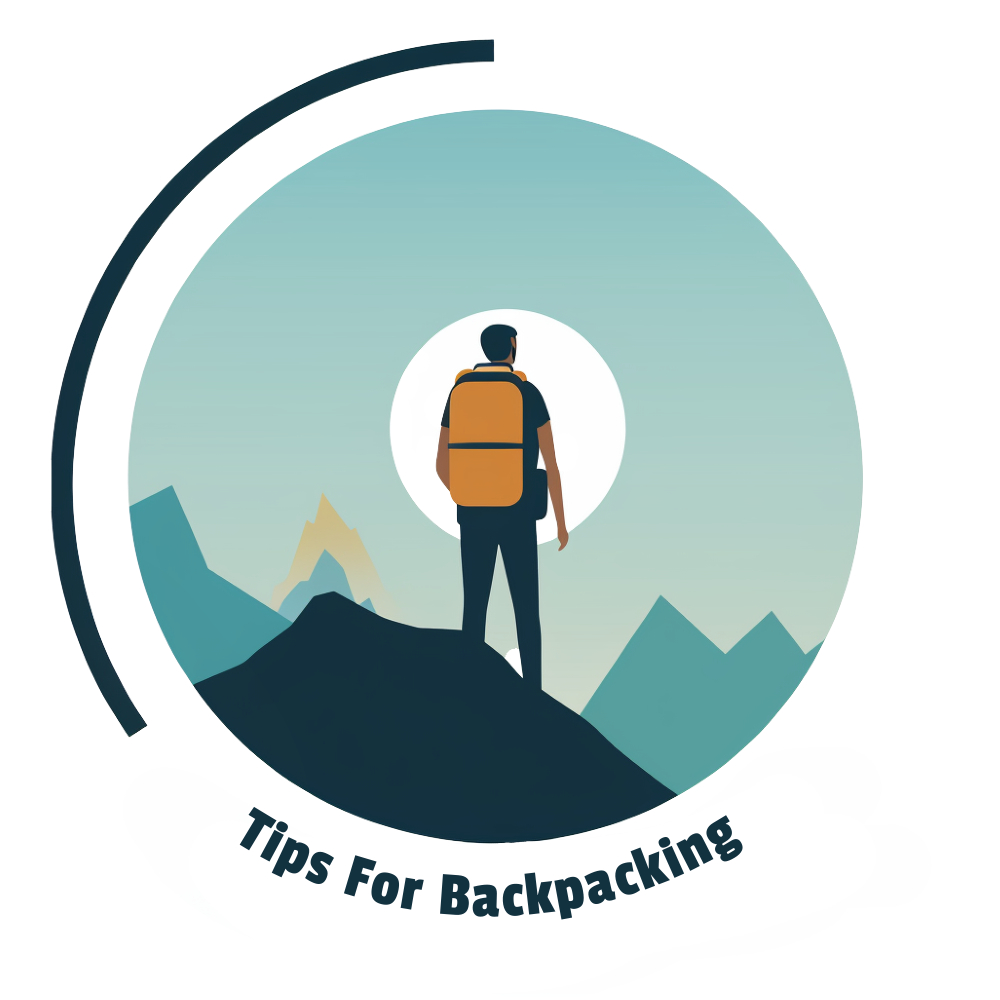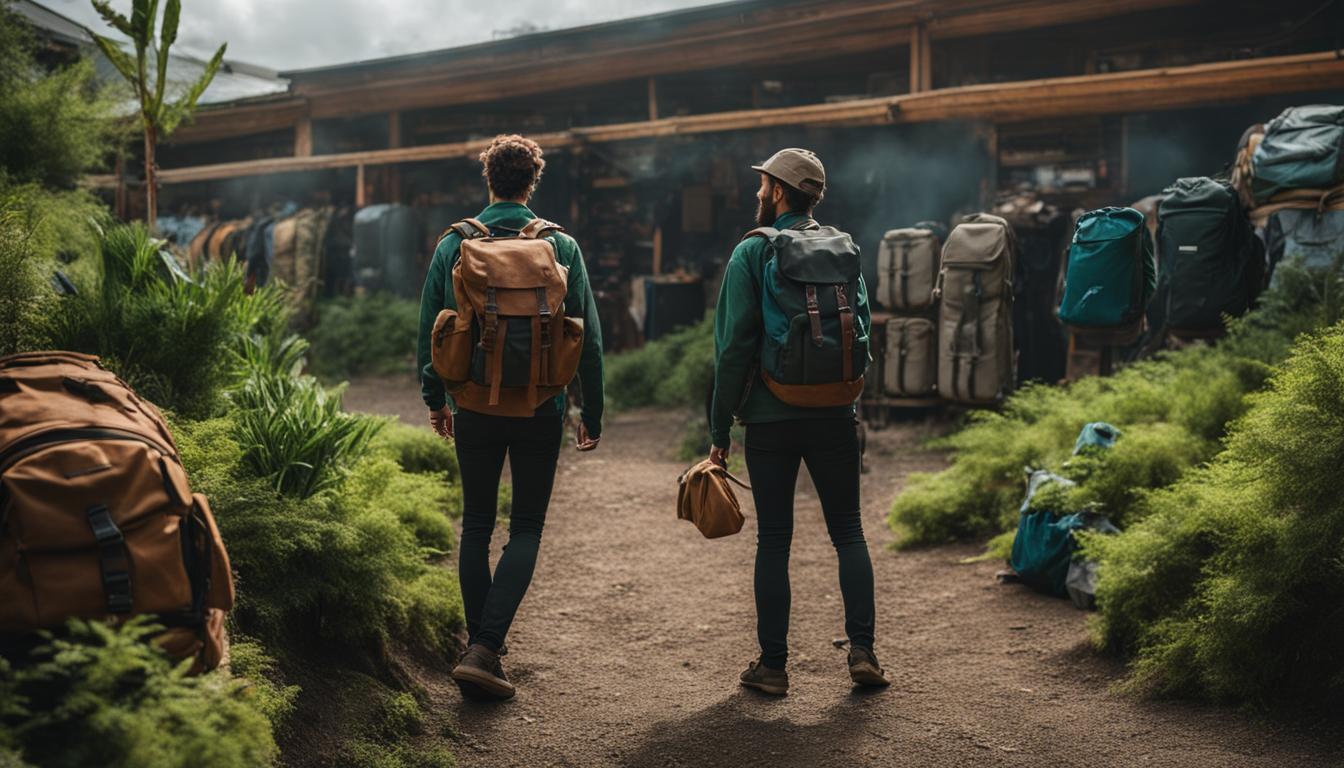A growing trend in the outdoor community is the shift towards eco-friendly backpacking. This practice combines my love of nature exploration with my dedication to sustainable living. Choosing the right equipment is vital for an enjoyable and responsible backpacking trip. Brands like North Face Eco Trail, BioLite CampStove 2, and GSI Outdoors are leading the way in producing sustainable camping gear. When I select eco-friendly camping gear, it’s important to consider the sustainability of the manufacturing practices and the supply chain involved. I prioritize gear companies that adhere to sustainable outdoor practices and offer eco-friendly outdoor essentials, as this is a key step towards sustainable backpacking. Certificates and labels such as BLUESIGN, Fair Wear, PFC Free, and REPREVE can guide my choices in selecting sustainable camping gear.
Key Takeaways:
- Choosing sustainable gear is crucial for responsible and environmentally conscious backpacking adventures.
- Brands like North Face Eco Trail, BioLite CampStove 2, and GSI Outdoors offer sustainable camping gear options.
- Prioritize gear companies that adhere to sustainable manufacturing practices and supply chains.
- Certifications such as BLUESIGN and Fair Wear can guide your choices in selecting sustainable camping gear.
- Consider gear made from recycled or sustainable materials whenever possible to reduce your environmental impact.
Criteria for Choosing Sustainable Camping Gear
When it comes to selecting sustainable camping gear, there are several key criteria to consider. First and foremost, it’s important to prioritize brands that follow sustainable manufacturing practices and have a transparent supply chain. Look for certifications like BLUESIGN and Fair Wear, which ensure that the gear is produced using sustainable materials and ethical labor practices.
Another important factor to consider is the use of eco-friendly materials. Opt for gear that utilizes recycled or upcycled materials, as this helps reduce waste and minimize the use of new resources. Additionally, look for gear that offers eco-friendly alternatives to single-use plastics. This could include reusable water bottles, utensils, and food containers made from sustainable materials.
Durability is also a crucial aspect to consider. Choosing gear that is built to last not only reduces the need for frequent replacements but also minimizes the overall environmental impact. Look for gear that is backed by warranties or repair services, as this ensures that the product can be fixed and maintained for a longer lifespan.
| Criteria | Importance |
|---|---|
| Sustainable manufacturing practices and supply chain | High |
| Use of eco-friendly materials | High |
| Eco-friendly alternatives to single-use plastics | Moderate |
| Durability and warranty | High |
By considering these criteria when selecting your camping gear, you can make choices that align with your commitment to sustainability. Remember to research brands and read product descriptions to ensure that the gear meets your criteria for eco-consciousness and durability. With a wide range of sustainable camping gear available, you can embark on your outdoor adventures knowing that you’ve made responsible and environmentally conscious choices.
Top Picks for Eco-friendly Camping Gear

When it comes to eco-friendly camping gear, there are several standout options that prioritize sustainability without compromising on performance. These top picks combine innovative design, ethical manufacturing practices, and the use of eco-conscious materials to create gear that is both environmentally friendly and durable.
The Nemo Equipment Dagger Osmo Tent
The Nemo Equipment Dagger Osmo Tent is a prime example of sustainable camping gear. Made from Global Recycled Standard (GRS) certified yarns, this tent not only reduces waste but also eliminates the use of harmful chemicals. With PFC and PFAS-free construction, it ensures that your camping experience has a minimal impact on the environment.
The North Face Eco Trail Sleeping Bag
The North Face Eco Trail Sleeping Bag is another top pick for eco-conscious backpackers. This sleeping bag is filled with 100% recycled polyester insulation, reducing the need for new materials. The North Face also uses recycled materials in the construction of this sleeping bag, further minimizing its environmental footprint.
The BioLite CampStove 2
The BioLite CampStove 2 is an innovative and environmentally friendly camping stove that promotes sustainability and reduces waste. This stove uses renewable biomass as fuel, such as twigs and pinecones, eliminating the need for traditional fuel sources. It also features a built-in USB port that allows you to charge your devices using the heat generated from the stove, making it a versatile and eco-conscious choice.
The Mountain Hardwear Lamina Eco Af Sleeping Bag
For those looking for a sustainable sleeping bag, the Mountain Hardwear Lamina Eco Af is a top contender. This sleeping bag is made from repurposed fabric and filled with recycled polyester, reducing the demand for new materials. Additionally, Mountain Hardwear offers a lifetime warranty and repair service for this sleeping bag, ensuring its longevity and reducing the need for replacements.
Klean Kanteen’s Insulated Bottles
Klean Kanteen’s Insulated Bottles provide a sustainable alternative to single-use plastic bottles. Made from recycled stainless steel, these bottles are not only durable but also help reduce plastic waste. With excellent insulation properties, they keep your drinks cold or hot for extended periods, making them the perfect companion for outdoor adventures.
These are just a few examples of the many eco-friendly camping gear options available on the market. Whether it’s a tent, sleeping bag, stove, or water bottle, there are sustainable choices for every aspect of your camping trip. By opting for gear that prioritizes sustainability, you can enjoy the great outdoors while minimizing your environmental impact.
Conclusion
Choosing sustainable gear for my backpacking adventures is a priority for me. I want to minimize my environmental impact and make responsible gear choices that align with my commitment to the environment. By opting for eco-friendly camping gear, I can enjoy my outdoor experiences while being environmentally conscious.
When selecting gear, I prioritize brands that prioritize sustainability in their manufacturing practices and supply chains. It’s important to choose gear made from recycled or sustainable materials whenever possible. Certifications and labels like BLUESIGN and Fair Wear guide my choices and ensure that the gear I select meets sustainable standards.
Having a wide range of eco-friendly camping gear available makes it easier for me to find gear that aligns with my values. From tents made from recycled materials to sleeping bags filled with recycled polyester, there are many options to choose from. I also opt for reusable items like Klean Kanteen’s Insulated Bottles, which help me reduce single-use plastic waste.
Ultimately, choosing sustainable gear is a way for me to enjoy my backpacking adventures while being mindful of the environment. By making responsible gear choices, I can contribute to a more sustainable future and inspire others to do the same.

